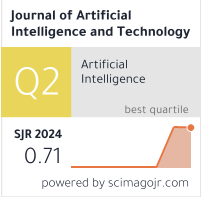Intelligent Optimization Design of Green Logistics Supply Chain Network Considering Pollution Emission and Capacity Constraints
DOI:
https://doi.org/10.37965/jait.2025.0839Keywords:
capacity, green logistics, Marine predators algorithm, multi-objective, Pollution discharge, supply chainAbstract
Enhancing green supply chain network optimization is a key component to reduce carbon emissions and to improve resource efficiency. To balance the objectives of economic cost and environmental pollution, this study proposes a supply chain network design framework incorporating intelligent optimization algorithms. This study incorporates pollution emission and capacity constraints into the supply chain network design and designs a function model with the objective of minimizing operating costs. After that, the marine predators algorithm is improved for path decision-making and freight allocation, and the solution is stage tested and repaired. The results indicated that the average percentage deviation of the research method was less than 0.05% and the average processing time was less than 0.2 s. The method had better convergence and deconvergence stability than that of the forbidden search, Lagrangian relaxation, Gaussian improvement, and artificial neural network methods. The average values of running time and spacing index were 276 and 717. The research method can provide a reference for the cost savings of green logistics, which can help to realize the decision optimization and program adjustment under the goal of “double carbon.”
Downloads
Published
How to Cite
Issue
Section
License
Copyright (c) 2025 Authors

This work is licensed under a Creative Commons Attribution 4.0 International License.




